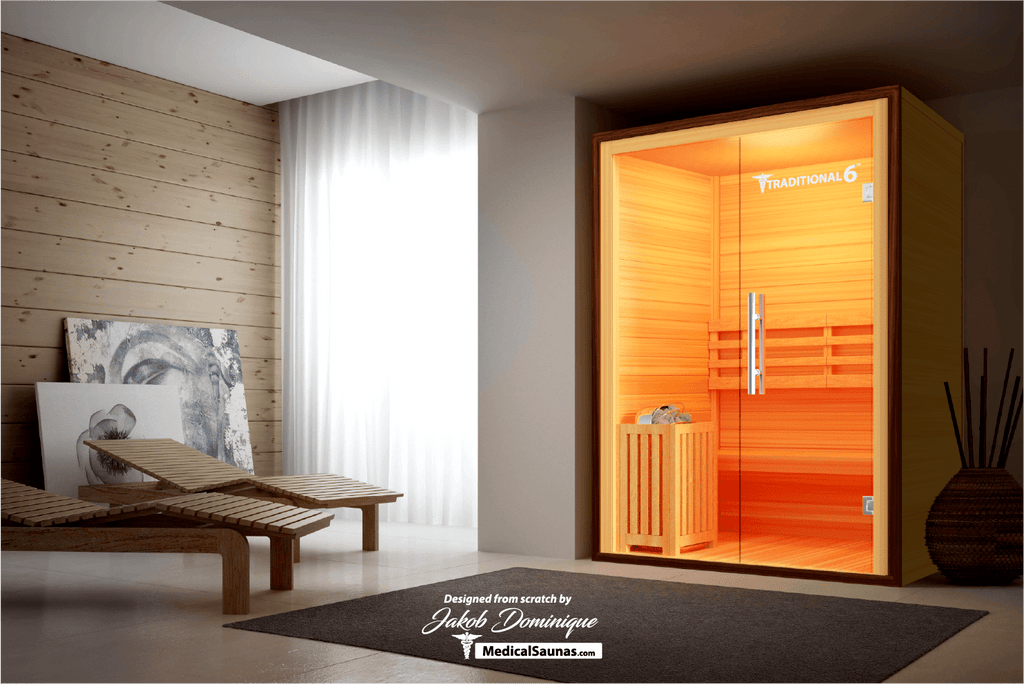See This Report on Traditional Sauna
See This Report on Traditional Sauna
Blog Article
Traditional Sauna for Dummies
Table of ContentsOur Traditional Sauna IdeasSome Ideas on Traditional Sauna You Need To KnowExcitement About Traditional SaunaGetting My Traditional Sauna To Work
Many of the weight shed in a sauna is water loss and is re-gained upon rehydrating. Without a question sauna can be an important component of a healthy weight loss program. To take a look at the distinctions in between standard and IR saunas, I will certainly divide these into proven, academic, and fabricated distinctions.Hence, the most popular point in the saunawhich is at the ceiling straight above the sauna heateris normally in between 185 and 190 F. Traditional Sauna. Claims that a typical sauna goes beyond 200 F is simply not true and not relevant for electrical saunas marketed in the United States. The temperature for a far-infrared sauna is generally established in between 120 and 140 F; however, unlike the traditional sauna, the objective in and IR space is not to achieve a heat
Because of this, the temperature distinction is practically pointless, given that extreme sweating leads to both sauna types, however the approach of heating up the body is different. In an IR sauna the bather will certainly feel warm and will certainly sweat profusely, but at a lot lower temperature levels. Thus, if the goal is to spend longer periods of time in the sauna, the IR sauna is a good option.

Indicators on Traditional Sauna You Need To Know
When the high temperature is achieved, the components cycle on and off to maintain the high temperature level. Most standard sauna customers appreciate putting water over the rocks to develop steam to raise sauna moisture levels. The advantages of pouring water over the rocks consist of: making the room more comfy, moistening the nasal flows, and allowing the use of aromatherapy by blending vital oils with the water.
In a far-infrared sauna, the warm front pass through the body to successfully warm the body and raise the body core temperature level. To accomplish this raised temperature level, Far-infrared emitters create infrared energy which is close to the exact same wavelength as that which the body normally emitsoften described as the "Essential Array" of 7 to 14 microns), so the power is well gotten by the body.
When the energy gets in the body, it creates the body temperature to boost and ultimately results in sweat. In an infrared sauna it is necessary for the emitters/heaters to remain on virtually learn the facts here now continuously. Because there is no mass of rocks to preserve heat, the sauna will certainly cool down if the emitters shut down.
As discussed above, the sauna bather in an infrared room intends to position himself in front of running emitters to get maximum take advantage of the warmth. The home heating time for both spaces can be very various, depending upon exactly how the areas are made use of. For a typical sauna, a bather ought to enable 30-40 minutes for the space to achieve a preferred temperature level and to effectively pre-heat the rocks.
The Only Guide to Traditional Sauna
A well built sauna will commonly accomplish a temperature level of 150-160 F in about 30-40 mins. For hotter temperature levels, the room might need to heat for a directory longer duration.
To some, 15 minutes was "squandered" while the infrared energy warmed the wood panels check it out instead of warming a body, while others discover a pre-heated room to be a lot more comfortable and believe a raised beginning temperature level is required to start sweating. The size of suggested usage for each and every area is roughly the very same (10-15 mins per session); nonetheless, because of the reduced air temperature levels and the ability to feel the effects of infrared heat quicker than a traditional sauna, it is not uncommon for a person to invest a total amount of 20-30 mins in an infrared sauna.
Typical saunas have a tendency to be bigger (hence utilize more electricity) than infrared saunas, although standard saunas are definitely offered in one and 2 person sizes also. For a two-person traditional sauna, 5x6 or 5x7 dimension is most preferred. The top bench can comfortably seat 2 or 3 individuals and is additionally long enough to relax during the sauna session.


The ordinary price per kWH of electrical energy in the U.S. is roughly $0.11, so a 4.5 kW heater will certainly cost approximately $.50 to run for one hour, if the heating system runs continuously for one hour. Normally a sauna heater will run for 75% of the initial hour and 50% of subsequent hours on because the elements cycle once the set temperature level is achieved.
The Basic Principles Of Traditional Sauna
A 2 person far-infrared room is normally physically smaller sized than a traditional sauna, often about 4' x 4' or smaller. The IR furnace is commonly 1.5-1.7 kW utilizing a 120 volt 15 amp plug-in solution. Because the area can be used faster than a sauna area, we will presume the space is used for to of an hour consisting of warm up time.
There is a seldom reviewed difference in the social experience between the two spaces. While our culture has shed some of the social advantage of the traditional sauna experience, it can be really socially satisfying. From household time in the sauna, to heart-felt discussions with considerable others, to sauna partiesthe traditional sauna experience can cause intimate mingling.
Many higher end infrared spaces include tinted light treatment, noise systems and full-glass fronts.
Report this page